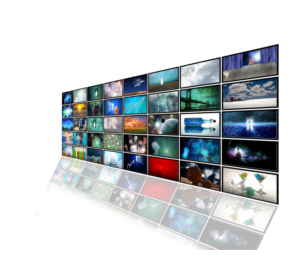
As the digital world continues to evolve, business owners are no longer afforded the luxury of wondering if they will incorporate new technologies into their operations, but rather how they will incorporate these advances into their operations.
Whether it’s the convenience of online ordering or the use of web-based applications to provide customer feedback, our customers expect our business to match the advances they see in the cell phones in their hands and the computers in their homes. One method of applying this new digital landscape into your business is through the use of digital signage, or the use of LCD displays or tablets to convey information to the customer and allow for touch-based interaction with your offerings.
With the digital revolution now over (digital won, by the way), the average person has grown accustomed to the ability to interact with the world via flatscreens, retina displays and touch-based tablets. Because of the increasing familiarity, there is a burgeoning expectation for everything in our world to be interactive and, more importantly, to be a source of constant and ever-changing information. That’s where the use of digital signage brings together your needs as a business owner to deliver effective advertising and information with the manner in which your customers are used to receiving and interacting with this information.
Digital signage is often confused with the simple use of LCD screens to display a static image. You may consider any store-bought display to be analogous to digital signage, but there are important distinctions. The first is the difference between consumer- and commercial-grade electronics. While you can pick up an impressive-looking display at any “big box” store, these are consumer-grade electronics, built to be displayed in low-light environments for an average of 4-6 hours per day. Commercial-grade digital signage units are built to be clear and relatively glare-free in well-lit environments and expected to operate uninterrupted for as long as your business is open. What this means for you is that, while an off-the-shelf display may be used for an approximation of digital signage, it will not be as clear, nor last as long, as the commercial-grade products. You will probably find yourself replacing the less expensive display with more frequency (not to mention the fact that the display simply won’t look as good), resulting in a higher cost of ownership than the commercial-grade product. Also, products created with the intended use of digital signage incorporate a blade server-like PC which will wireless connect to your office computer, allowing you to update as needed and reduce the cabling required to display the image. In fact, in most cases, all you need is a power cord!
There are some questions to ask yourself when deciding upon digital signage. The first may sound obvious, but it’s important to be clear: what are you going to use it for? Will it be a static representation of your menu? Will it be a more dynamic ad board, showing specials and advertising? What other information would your customers find relevant. Because so much of modern advertising has cleverly incorporated real information with sales, it only makes sense to use similar tactics. When deciding upon your display, ask yourself what kinds of customers will be seeing this display and what information about your business you want to communicate to them. Does that target customer’s profile change based on time of day? How should the signage change based on that information?
Also important… location, location, location! Will you be using your sign to entertain customers waiting in line with the latest sports scores and weather information, while also advertising counter specials? Will your customer be using the sign to order? If so, how can you highlight items you’re trying to push? Regardless of the information, placing the sign in high-traffic areas where the largest number of customers will see it is key. In some cases, this may be a queue line, or facing out onto the street to attract customers into your store. Regardless, knowing where you intend to place your sign should be integral in determining the nature of the information displayed there.
Lastly, what size display makes sense for your business? For our above example of menu board information, big displays above a service counter make sense, with relative static information displayed there (along with ads for newer items!). These displays can be up to 65” in size, or a more modest 42” display may be used in multiple-display environments. But what if even that is too big? With tablet technology now more affordable than ever, now you may place digital signage via tablets in smaller, more accessible locations. This usage can be tied to interactivity that larger displays are not currently capable of, allowing the consumer to use swipes to select relevant information or even design an order for themselves.
Given the fact that children today grow up in a world that has always known the internet, always known touch-sensitive applications, to deny the usefulness of these tools in your business is to delay the inevitable. With the opportunities to you through digital signage, you can simultaneously embrace the digital age and push information to your customers that can drive sales up and highlight the unique services your business provides. Before diving into the world of digital signage, be sure you ask yourselves some of these basic questions, and you’ll be seeing your sales increase in no time!
